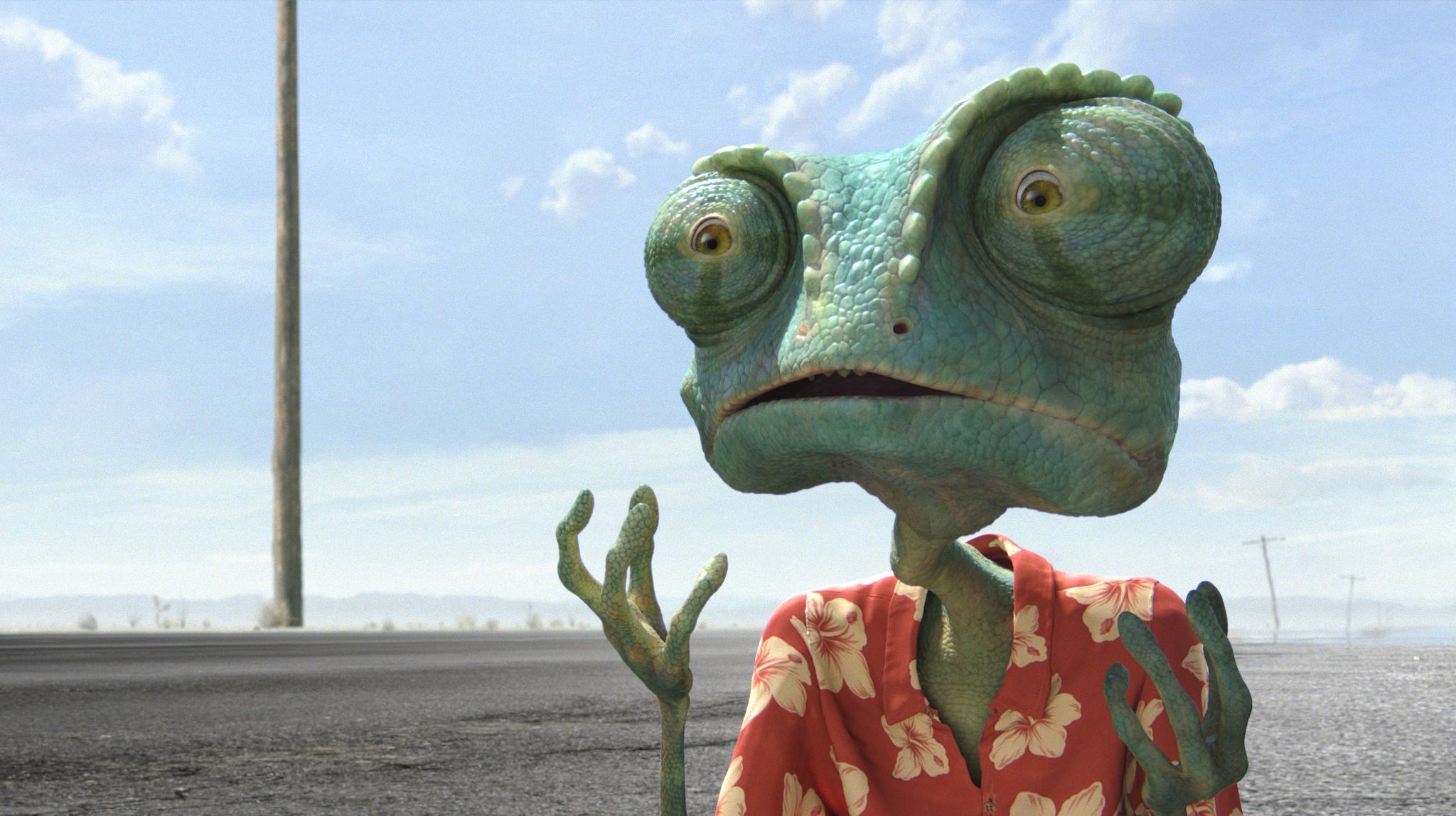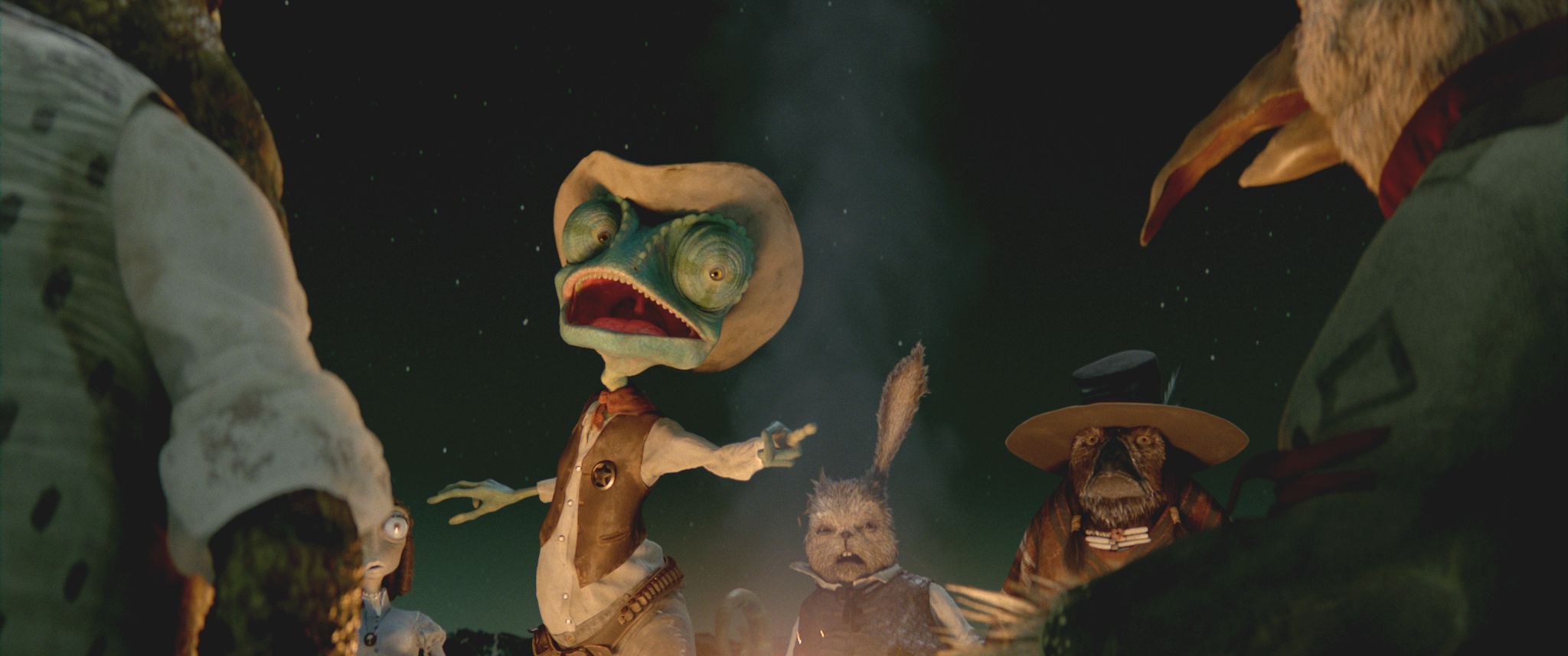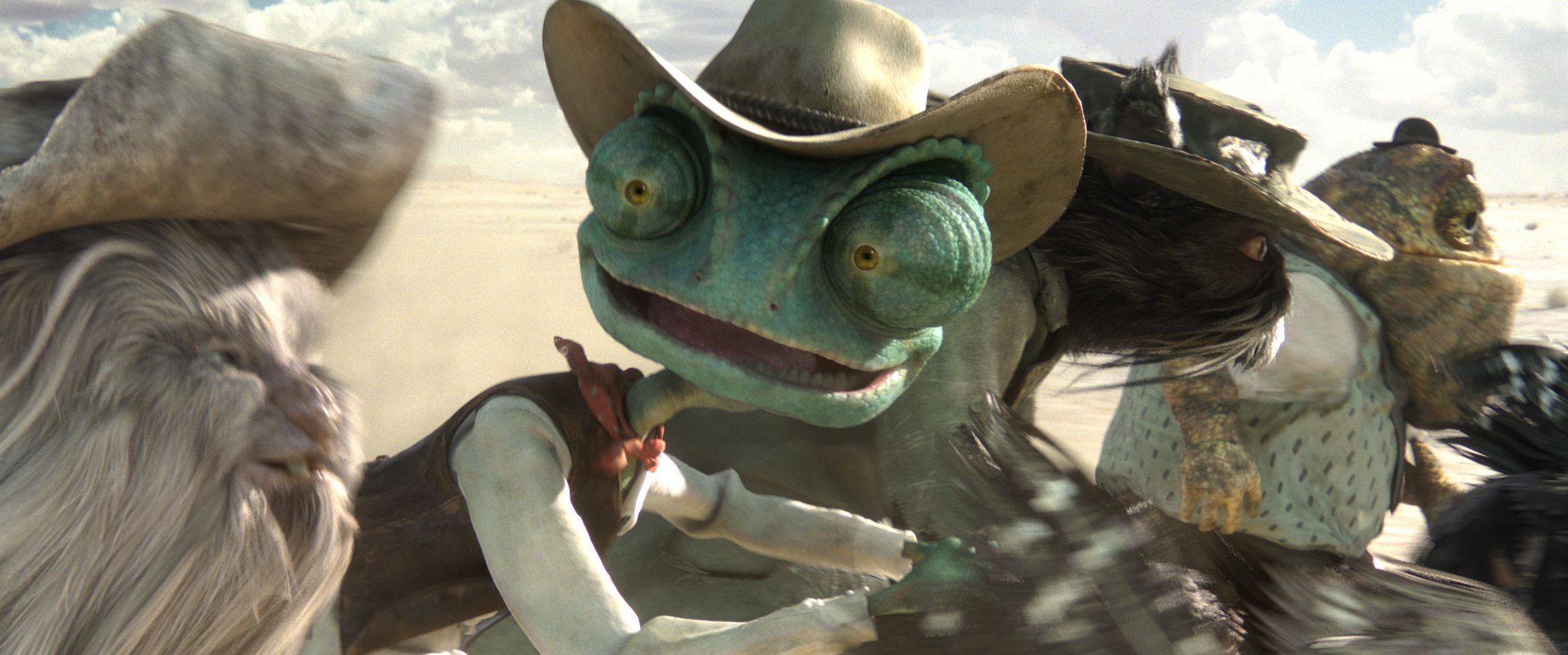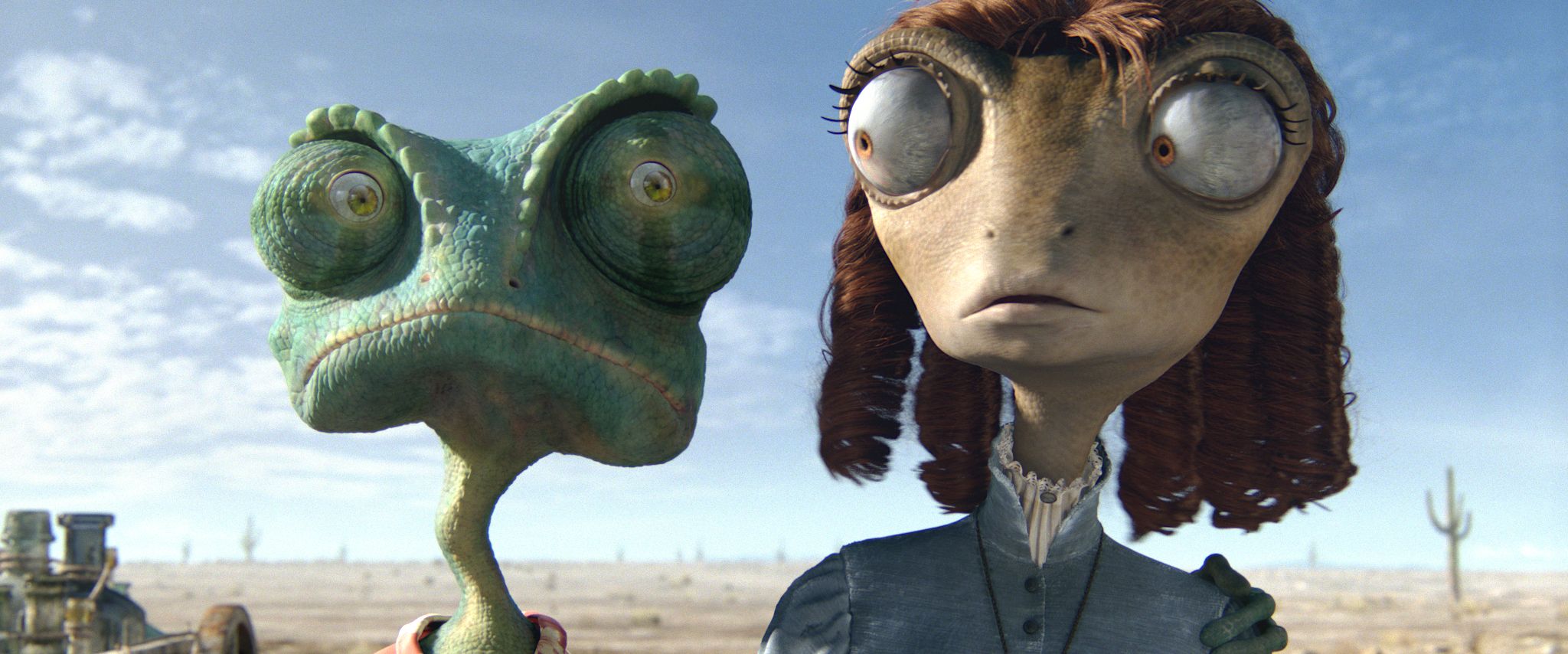Last week, I journeyed north to ILM to speak with two of the men responsible for the animated hit Rango, which hits the shelves on Blu-ray and DVD on July 15. The movie was quite a success, both critically and financially, and it also was a first for both Paramount Pictures and ILM. Rango is the first stand-alone animated feature which Paramount distributed themselves (the studio usually distributed DreamWorks Animation projects, with the most recent example being Kung Fu Panda 2). Rango also was the first movie which ILM fully animated, as opposed to being hired to work on bits and pieces of animation or animated special effects.
One of the people we spoke to was animation director Hal Hickel, an Oscar-winning visual effects artists who joined ILM as an animator in the late 90s. Although he has served as an animator and animation supervisor on blockbusters such as Iron Man and the pirate trilogy Pirates of The Caribbean: The Curse of The Black Pearl, Pirates of the Caribbean: Dead Man's Chest, and Pirates of the Caribbean: At World's End with Rango director Gore Verbinski. Perhaps ironically for an animation supervisor, Rango is Hal Hickel's first animated movie.
Hal Hickel spoke at length about several aspects of Rango with our assembled press corps, including the specific designs for these animated animal characters, which are based on real creatures in nature... to an extent.
"When we started into the project, one of our first questions was, 'Do you want these characters to be as much animal as character?' For instance, Doc, the rabbit and the town drunk and town doctor, is he ever going to nibble on a carrot or do rabbit-y things? Gore was very sure, right away, that wasn't what he wanted. Basically, these characters are all these human, Western archetypes first, he's the drunk and the twon doctor, and the animal thing was sort of a design motif that fit into their desert surroundings. He wanted to use animals in the desert, but he didn't want to make a film full of animals. He wanted to make a Western, and we would use the animal-ness as a design aspect. We do have a handful of characters where there are more of a balance. Jake the Snake is one of them. It's not like we gave him arms and legs or anything. He's a snake and he's going to move like a snake. Then there were those wild pigs, who are used as these beasts of burden in their world, those were probably the closest thing to a natural animal in the film."
"It was great. It was one of the things we talked about, right up front. It wasn't about us saying, 'OK, we're going to pioneer a whole new way to make animated movies.' It was just that none of us are from that world, really. I had animated at Pixar 15 years ago, but I was just an animator. None of us really had any experience making an animated feature. Gore wanted an experience with his actors that he was used to having. He thought it was crazy to bring the actors in, one at a time, and have them record separately. It was just him saying, 'Well, that's not how I work, so let's do it this way.' As we talked about it, we thought it would be great because we'd get a more live, spontaneous sound, plus, you can film it all so whatever comes out of it, will be great for the animators to build off of and be inspired by."
He also talked about some of the Western movie influences they used in creating this animated town of Dirt, the characters who inhabit it, and how the aspect of actual dirt itself played into the movie.
"A lot of it comes from an obvious love of the Sergio Leone films. I think Once Upon a Time in the West was on a constant loop. Every time we went down to Gore's house, it always seemed to be on. You look at those movies and there's a lot of great faces, a lot of great character actors with great faces, gritty, dirty, so some of it was inspired by that. In fact, 'dirt' and 'fuzz' were real watch words on the film. Nothing could be too clean or too perfect. Gore wanted dirt or dust in every shot. One way of doing that, is you do a full particle sim, with 3D dust flowing in and around everything. We knew we couldn't do that for every shot, because it's just too expensive and time-consuming. We had to come up with some tricks for always being able to come up with some atmosphere with dust blowing through, but without breaking the bank. The town of Dirt was our biggest asset in the film, it's featured in the most number of shots, and we wanted to put a lot of love into that."
Hal Hickel also talked a bit about the character of Rango, and how he evolved into this bizarre chameleon hybrid creature.
We also spoke with the man most responsible for animating Rango himself, Kevin Martel. He got his start as a character animator on Star Wars: Episode I - The Phantom Menace and has worked on a slew of blockbusters since then, including this summer's hit Super 8. Kevin Martel first spoke about how it helps as an animator to be able to relate to the character you're working on, and that he definitely could relate to Rango.
"For me, it's always good when you get a character that you can relate to. I think I can relate to a lot of his awkwardness. I spent a lot of my time growing up drawing, isolated. I can relate to his feelings, so I think that's definitely another piece of the puzzle, for each animator to identify and connect with and then bring away a little bit of themselves."
Kevin Martel also talked about how the live ensemble recordings of the voice actors aided in his work. He showed us some of the raw footage of the recording, with Johnny Depp recording a scene where he's mocking other characters while walking behind them. We saw this scene in this raw, live-action scene, the animatic, a rough animation pass, and the final scene. It was very intriguing to see how the scene develops each step of the way. He also talked about how this animated environment allowed Gore Verbinski more control as a director.
"Gore was very specific about making it look like we're actually shooting this. If I go into this environment, I'm going to shoot from over here, and some light coming in from over here. He's plotting it out like he would a live-action shoot. He's a live-action director, so it makes sense, and I think that helped keep this film very grounded and very real. It's the same ideas, it's just another medium to do it in."
Of course, you can't have a Western without a cowboy hat, and Kevin Martel told us that Gore Verbinski wanted Rango to wear his hat in a unique way. He showed us a lot of early tests they did, with Rango wearing hats in several different ways. You wouldn't think that the simple act of wearing a hat would be given much thought in a film, but that's obviously not the case.
"One of the things that Gore was specific about, was the way Rango wears his hat. You can wear a hat tons of different ways, and he wanted it to be an extension of his personality. He wanted there to be thumbs on that hat."
One of the unique things about Rango as a character is the weird little crook in his neck, a trait that Kevin Martel doesn't even notice after working on the film for so long.
After both interviews were done, we were treated to lunch at the massive ILM commissary and a tour of this phenomenal facility, which features historic cinematic landmarks such as R2D2, Yoda, and even Han Solo in carbonite at every turn. While I have seen all of these items on previous visits, as I said before, that doesn't make them any less awesome.
That about wraps up my trip to Industrial Light and Magic for Rango, which hits the shelves on Blu-ray and DVD on July 15.




